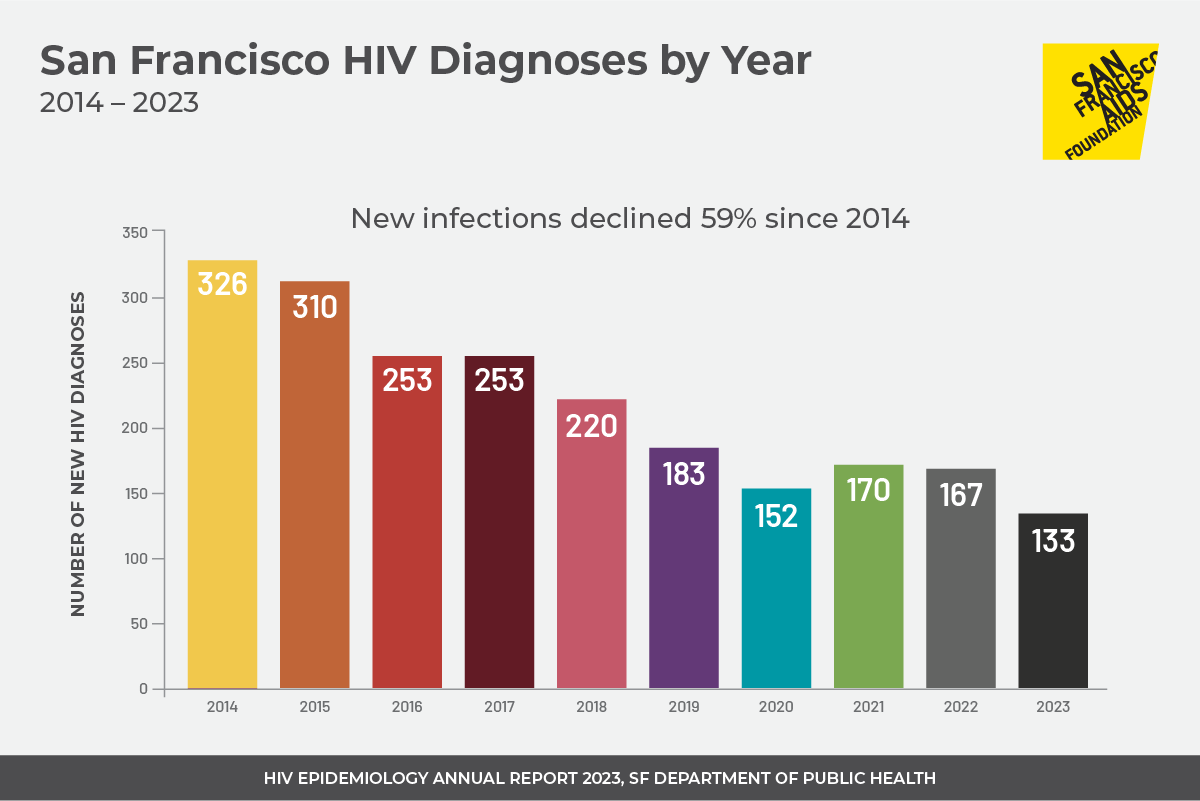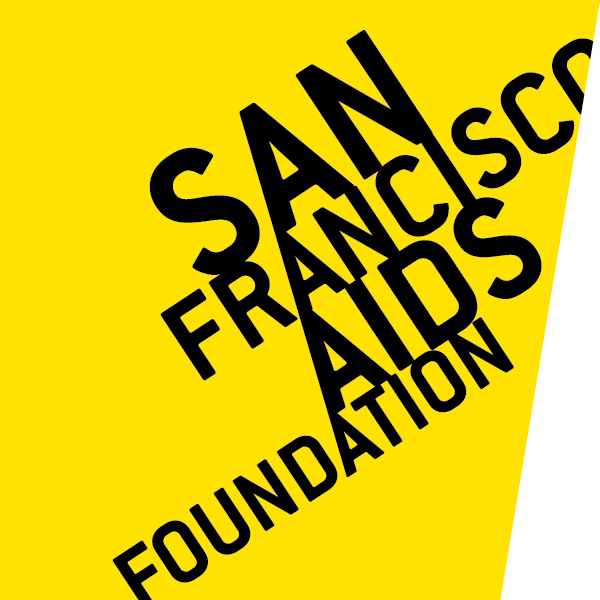New HIV infections continue dramatic decline

The number of new HIV infections diagnosed in San Francisco continues to decrease, with a total of 133 new HIV infections diagnosed in 2023, compared to 167 diagnosed the previous year. Since the advent and widespread uptake of PrEP in the early 2010s, new HIV infections have dramatically declined–by more than 72% since 2012. The new data are reported by the HIV Epidemiology Annual Report for 2023, released by the San Francisco Department of Public Health’s Population Health Division today.
“We are encouraged by progress we are making in San Francisco to reduce HIV transmission,” said Tyler TerMeer, PhD, CEO of San Francisco AIDS Foundation. “Widespread free HIV testing services, culturally accessible prevention and care, and community-based PrEP programs such as those provided by SFAF and other community partners including the San Francisco Department of Public Health are making a difference in getting to zero.”
There are notable shifts over time in the populations most affected by new transmissions, with disparities apparent by race and ethnicity, housing status, and gender identity.
Out of the 133 new diagnoses reported, most were among cisgender men who have sex with men, although there has been a 65% decrease in new infections among this population group since 2014 (241 infections in 2014, compared to 84 in 2023). Cisgender women, transgender women, and transgender men accounted for a larger share of new HIV diagnoses compared to the previous year.
Encouragingly, Latinx individuals made up a smaller proportion of new HIV diagnoses than in the previous year–30% compared to 44% in 2022. The report notes that the highest number of new diagnoses was among Latinx populations from 2018 to 2022, and that there were 34 fewer infections among Latinx individuals in 2023 compared to 2022.
The proportion of HIV infections occurring among Black and African American individuals continues to rise, however, with 19% of new infections in 2023 occurring in this population. (Black and African Americans represent less than 6% of the population in San Francisco.) And, Black and African American cisgender women had the highest rates of HIV, as compared to women of other racial and ethnic groups.
Nearly a quarter (23%) of new diagnoses occurred in people experiencing homelessness. People without stable housing have accounted for an increasingly larger share of new infections since 2014, with a total of 348 people reporting homelessness at the time of HIV diagnosis from 2014 to 2023. The report indicates that only an estimated 67% of people experiencing homelessness were virally suppressed in 2023 (compared to an average of 74% overall).
“It is not surprising that we continue to see disparities in HIV transmission, linkage to care, and viral suppression,” said TerMeer. “Factors that may push people to the margins of our society–such as racism, homophobia, transphobia, unstable housing, economic instability–all may play a part in HIV risk and speak to the importance of targeted HIV prevention and care efforts that prioritize populations most affected. Now is the time to further invest in culturally relevant programs and services–such as those offered by SFAF–that center Latinx populations, trans and gender non-conforming individuals, people who use substances, Black women and femmes, other BIPOC populations, and those aging with HIV.”
Read the full 2023 HIV Epidemiology Annual Report here.










